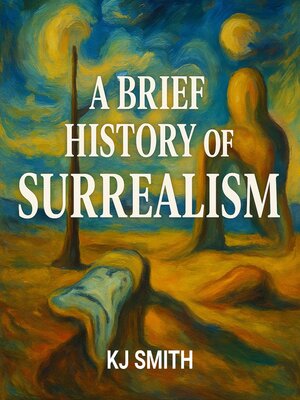A Brief History of Surrealism
audiobook (Unabridged) ∣ A Brief History of--Art Movements
By KJ Smith

Sign up to save your library
With an OverDrive account, you can save your favorite libraries for at-a-glance information about availability. Find out more about OverDrive accounts.
Find this title in Libby, the library reading app by OverDrive.



Search for a digital library with this title
Title found at these libraries:
| Library Name | Distance |
|---|---|
| Loading... |
This audiobook is narrated by a digital voice.
A Brief History of Surrealism
Surrealism emerged in 1920s Paris as the most radical artistic rebellion against rational thought, conventional morality, and the limitations of conscious experience. More than an art movement, it was a revolutionary philosophy that sought to liberate human creativity by tapping directly into the unconscious mind, dreams, and the irrational forces that Freudian psychology had revealed lurking beneath civilized society's surface.
The movement was born from the trauma and disillusionment of World War I, when traditional values and rational thinking had led humanity into unprecedented destruction. Led by poet André Breton, the Surrealists declared war on logic itself, embracing instead the bizarre, the unexpected, and the psychologically disturbing as pathways to deeper truths about human nature and reality.
Surrealist artists developed techniques specifically designed to bypass conscious control and access the unconscious mind directly. Salvador Dalí perfected his "paranoiac-critical method," entering hallucinatory states to paint dreams with photographic precision. His melting clocks and impossible landscapes weren't mere fantasies but attempts to visualize the fluid nature of time and memory as experienced in dreams and psychological states.
Max Ernst pioneered frottage and grattage—techniques that used chance and accident to generate unexpected images from textured surfaces. Joan Miró developed automatic drawing, allowing his hand to move freely across the canvas without conscious direction, creating biomorphic forms that seemed to emerge from some primordial unconscious realm. These weren't random experiments but disciplined attempts to document the mind's hidden creative processes.







